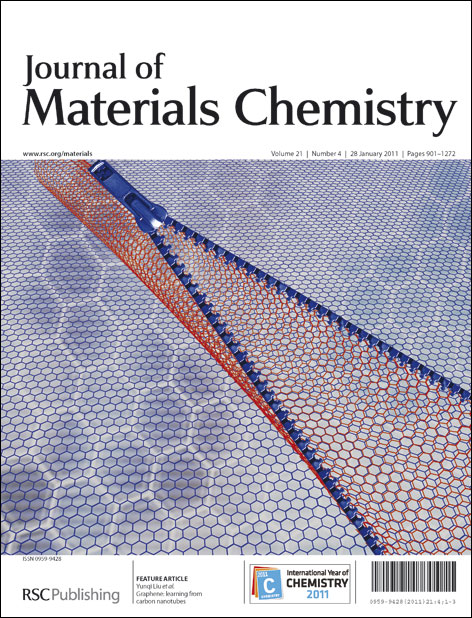Novel luminescent ternary organic–inorganic mesoprous hybrid materials bpy-Ln-Calix-NH2-PMO (Ln = Eu, Tb; Calix-NH2 = 5-amino-25,26,27,28-tetrahydroxycalix[4]arene, and PMO = periodic mesoporous organosilica) have been assembled by introducing Ln3+ and 2,2′-bipyridine (bpy) into the Calix-NH2-PMO hybrid material through a covalent bond assembling method. FTIR, UV, SAXRD, TEM, N2 adsorption measurements, photoluminescent spectra, and TG plots were obtained, and the results reveal that the resulting materials have high surface area, uniformity in the mesostructure, and good crystallinity. In addition, compared with the binary mesoporous hybrid Ln-Calix-NH2-PMO, the ternary mesoporous hybrids bpy-Ln-Calix-NH2-PMO show an overall increase in luminescent intensity, luminescent lifetime and quantum efficiency, which indicates that the introduction of the second ligand 2,2′-bipyridine can sensitize the luminescence emission of the lanthanide ions. Thermogravimetric analysis on bpy-Ln-Calix-NH2-PMO demonstrated that the thermal stability of the lanthanide complex was evidently improved as it was covalently bonded to the PMO matrix.
![Graphical abstract: Photoactive lanthanide hybrids covalently bonded to functionalized periodic mesoporous organosilica (PMO) by calix[4]arene derivative](/en/Image/Get?imageInfo.ImageType=GA&imageInfo.ImageIdentifier.ManuscriptID=C0JM02526G&imageInfo.ImageIdentifier.Year=2011)

 Please wait while we load your content...
Please wait while we load your content...